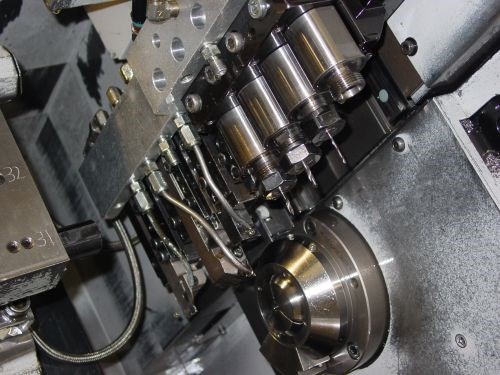How Swiss-Type Machining is Different
When you go from using a conventional CNC lathe to using a CNC Swiss-type for the first time, your thinking changes. Doug Paoletta of Encompass Swiss Consulting says there are five differences.
Share






When you go from using a conventional CNC lathe to using a for the first time, your thinking changes. Doug Paoletta of Encompass Swiss Consulting says these are the differences:
1. Making a turn length longer or a drilled hole deeper entails a Z-plus offset on the Swiss-type. (It’s Z-minus on a conventional lathe.)
2. The machining of long parts has to be divided into short segments on the Swiss, because the part can’t be allowed to extend too far from the guide bushing.
3. The size and material of the guide bushing are two important considerations in Swiss machining that don’t exist on a typical CNC lathe.
4. The cutting fluid is usually oil instead of water.
5. Machining cycles are complex and they move very fast.
For more detail, including elaboration on all of the points above, read this article about a shop that implemented its first CNC Swiss-type machine.
Related Content
-
View From My Shop: The Challenge of a One-Man Machine Shop
Mason Montalvo took up the challenge of starting his own shop running manual machine tools to produce complex parts.
-
How to Meet Aerospace’s Material Challenges and More at IMTS
Succeeding in aerospace manufacturing requires high-performing processes paired with high-performance machine tools. IMTS can help you find both.
-
5 Tips for Running a Profitable Aerospace Shop
Aerospace machining is a demanding and competitive sector of manufacturing, but this shop demonstrates five ways to find aerospace success.

















